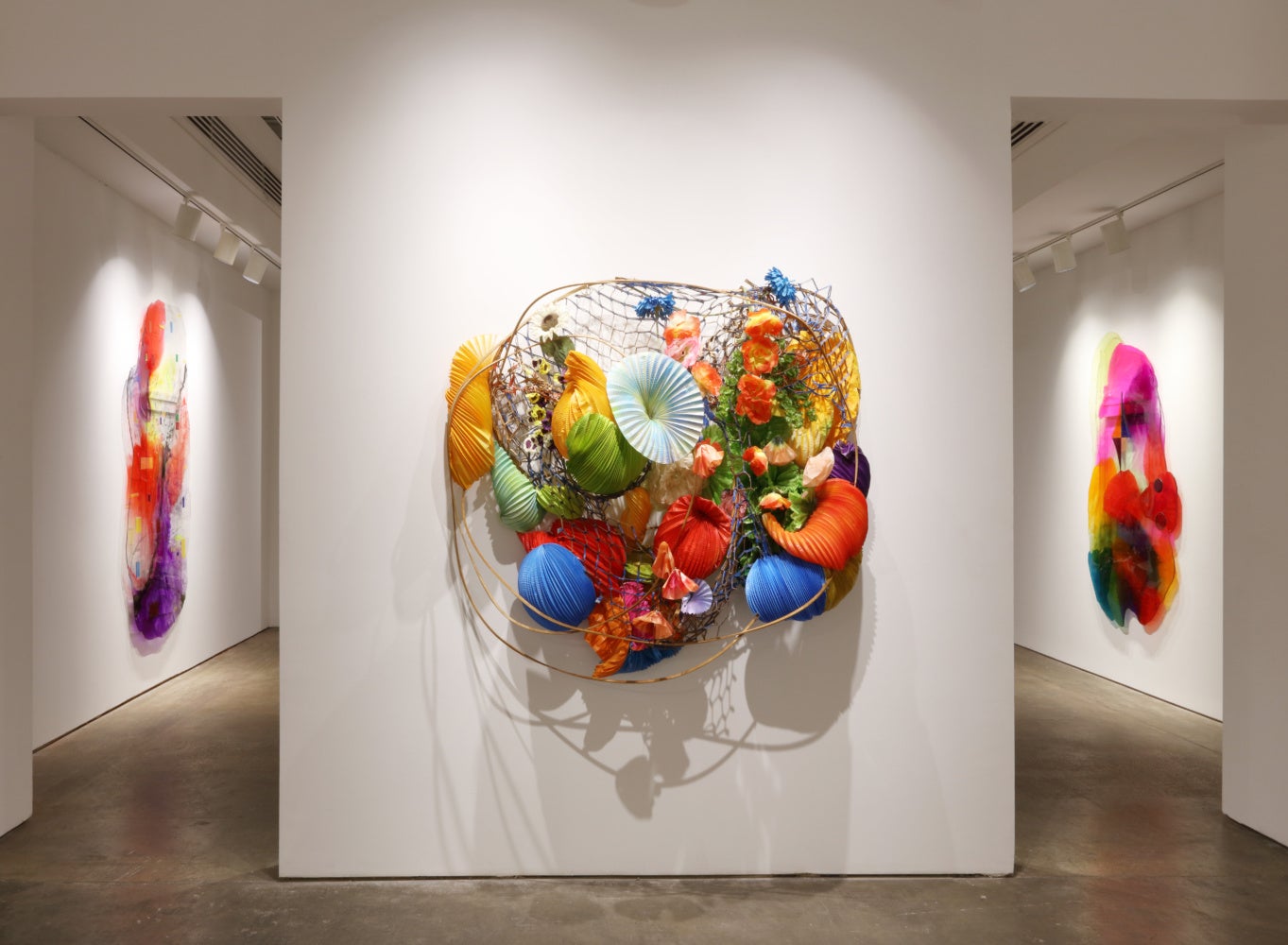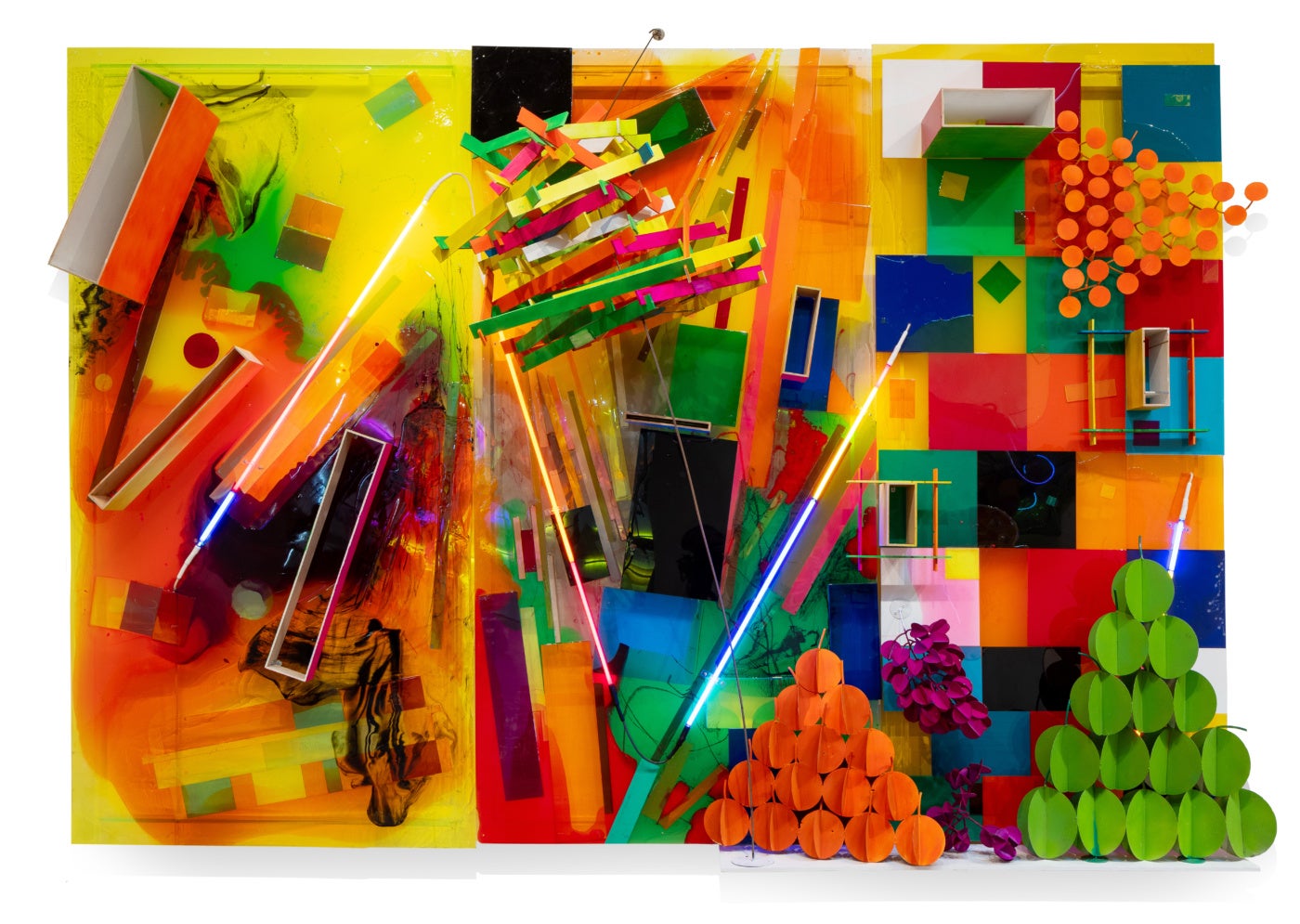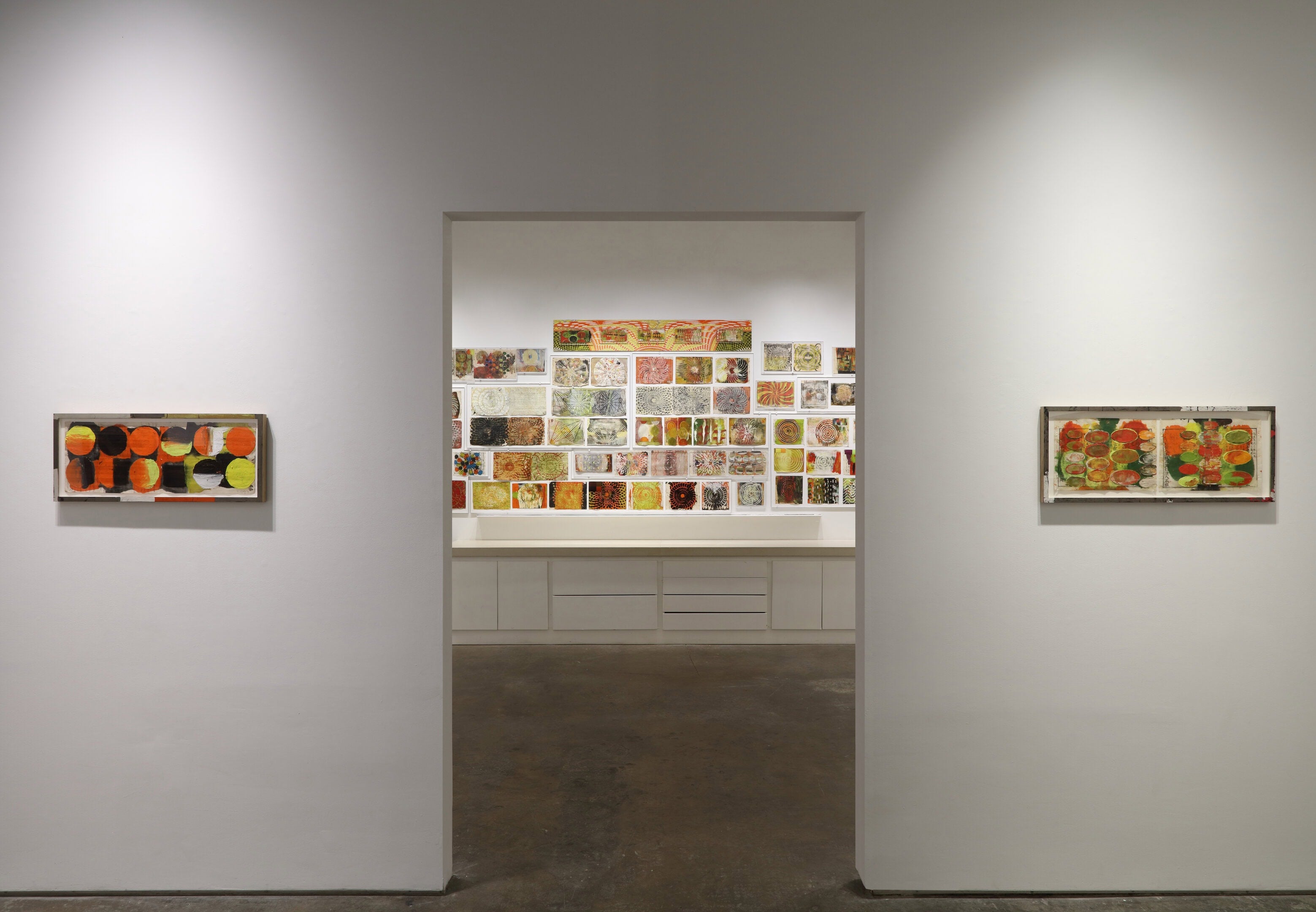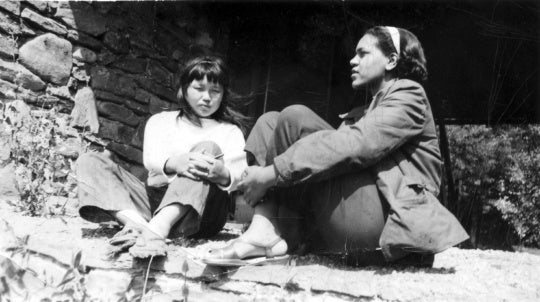
Judy Pfaff, an icon of installation art and queen of materiality, explores a diverse range of subjects and forms in her works but always returns to the same consistent undercurrents: joyous sensorial discomfort and a search for hidden truths. Unlike her usual hyper-site specific, one-time-only extravaganzas, Pfaff’s exhibition A Walk In The Park at Johnson Lowe Gallery in Atlanta is a mish-mash of past works and different mediums, congealing to form a colorful, radiant, and at times, awkward showcase.
The discomfort of Pfaff’s installations comes from her purposeful use of conflicting colors, textures, and shapes to form dense, visually complex structures that often intentionally disorient. Pfaff uses steel, LED strip lighting, acrylics, melted plastics, and elements from the natural environment to create tension between hard and soft, dry and wet, beauty and decay, and organic and inorganic. Pfaff also has a sense of humor—How to Set a Basic Table (Clue: Light) (2021), is anything but basic. Plastic fruit and silk flowers, the kind you might find in a Dollar General, sit atop a plastic table that appears to be melting in real-time; bright green frozen mid-ooze. Strips of plastic and LED flail wildly in and around the table setting. The whole piece appears to be caught mid-electrocution, in a state of frenetic explosion.
In contrast, is Trader Joes (2023). This work is larger, flatter, more organized, and despite its wild colors, would probably be right at home at the Trader Joes’ corporate offices, a truth which is either very funny or very boring. Abstracted green and orange citrus fruit are piled alongside semi-deconstructed neon boxes, as if the stockroom experienced a minor detonation, or perhaps just an average Sunday afternoon rush. To put these two pieces in conversation with each other serves to further questions around what can and cannot be consumed.

In Pfaff’s Opsins series, viewers move from the grocery store to the ocean floor with a group of creatures, part-living, part-dead, part-pile of trash, and all exuberant. The title of the series refers to the photoreceptive molecules that moderate all animals’ ability to perceive light and color. The works in the series are radiant, stylish, and best of all, a little gross. Some of the works, such as Fangtooth (2021), float jellyfish-like, casting strange shadows. The bright orange melted plastic of Fangtooth is an oozy, ripped-up toxic mess, almost consuming the twigs within it. Nothing But Blue Skies (2010) is less jellyfish and more evocative of coral and other sea creatures caught in industrial netting. The flowers and “coral” appear to bloom from the confines of a net, but on closer look nothing is as it seems. The coral-like creatures are made of industrial steel hardware, the flowers are fake and a little disheveled, and the netting is made not from wire or fabric but of cardboard. These ocean-esque works are beautiful, but also wretched, a clear nod to the current oceanic devastation and toxicity to come.
Closer inspection of Pfaff’s work reveals a reward of imperfections. Observation uncovers the smudges, the imperfections, and the subtle griminess of it all. Half-hidden within the complex installations can be found the residue of burnt materials, the dust from install, the oily smudges revealing the hand of the artist, the signs of human touch complicating the already dense array of natural and unnatural materials. These bits of dirt and muck add an intimacy to Pfaff’s work, preventing them from becoming a little too antiseptic.
The exceptions to this might be Bopsicle & Elcispob and Bippity Boppity Boo (2023), two admittedly hilariously named works that are simpler, cleaner, and—boring feels too cruel a word here—less interesting. These works, with their splotchy pigmented resin and slick exteriors, seem destined to fulfill a financial advisor’s request to diversify a portfolio while filling the wall space between the foyer and the dining room. They’re beautiful, but unnecessary at best (unless it’s your foyer in question), and a little undermining at worst, an uneasy shock of sterility amid gorgeous wreckage.

A happy surprise is the inclusion of An Unfinishable (2024), a sizable installation of small works-on-paper, a noticeable departure from the maximalist sculptures occupying the bulk of the exhibition. These drawings and paintings have a more muted pallet, with earthy greens, reds, grays, and browns as opposed to the vibrant pinks, purples, and oranges of the installations. They read as color and shape studies, with mandala-like patterns repeating again and again, and offer insight into how Pfaff approaches these elements in her work. Though understated in comparison to the wild multi-media sculptures, these works function as a useful addition when considering Pfaff’s artistic process at large.
Pfaff’s work eschews perfection, clarity, and even cohesion. She embraces disorder and flaws and leans into the psychological effects of color and shape to force the viewer into a space of uncertainty. The unnerving contradiction of materials and the allusions to the horror of our future and the weirdness of the present demonstrate Pfaff’s grip of what “these trying times” mean. The work in A Walk In The Park demonstrates that Pfaff not only understands such things, but is actively working into it and through it, and dragging viewers with her, smudges and all.

Judy Pfaff: A Walk in the Park is on view at Johnson Lowe Gallery, Atlanta through June 28, 2024.




